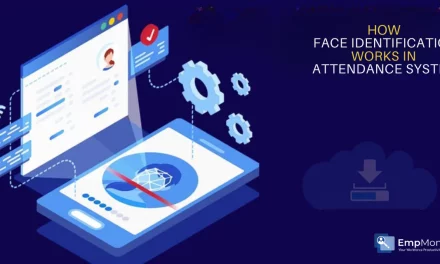When it comes to running a business smoothly, how you handle payroll matters more than you might think. It’s not just about making sure everyone gets paid on time (though that’s important). It’s also about choosing the right payroll schedule and understanding the difference between biweekly vs semi monthly can help you keep your team happy, your bookkeeping organized, and your workload manageable.
If you ever found yourself wondering about the difference between biweekly vs semi-monthly payroll schedules, you’re not alone.
At first glance, they seem almost identical, paying employees twice a month or every other week; how different could it be?
As it turns out, the difference is bigger than it looks.
Choosing between semi monthly bs biweekly payroll is not just a matter of preference. It can impact employee satisfaction, your company’s cash flow, and how simple or complex your payroll processing becomes.
In this guide, we’ll walk you through the key differences between biweekly vs semi monthly pay schedules and help you figure out which option makes the most sense for your business.
In a hurry? Listen to the blog instead!
What Is Biweekly Payroll?

Here’s a quick example:
If your company runs payroll on Fridays, employees might get paid on January 5th, January 19th, February 2nd, and so on, every two weeks, like clockwork.
Because a year is not divided evenly into weeks, biweekly schedules create a bonus: twice a year, employees receive three paychecks instead of two in a month. It’s a nice surprise for them, but it is something employers need to plan for in terms of cash flow.
Biweekly meaning in short:
- 26 pay periods per year
- Every two weeks
- Sometimes results in three pay periods in one month
Many companies, especially those with hourly workers or fluctuating schedules, prefer biweekly payroll because it lines up well with time and attendance tracking software.
Tracking 80 work hours (two standard 40-hour weeks) makes calculating overtime and managing hours simpler.
But is biweekly always the best fit?
Not necessarily, and that’s where the biweekly vs semi monthly debate heats up.
Let’s break down what semi monthly payroll looks like next, especially since many wonders are semi monthly and biweekly the same or completely different.
What Is Semi Monthly Payroll?

No surprises here:
Every month has exactly two pay periods.
Over a year, that totals 24 pay periods, not 26 like biweekly.
Here’s a real-world example:
An employee might get paid on January 15th and January 31st, then February 15th and February 29th (or 28th). The schedule sticks to dates, not days, so paydays can fall on any weekday, Monday, Friday, or even a Wednesday.
Semi monthly meaning in short:
- 24 pay periods per year
- Paydays are tied to dates, not days of the week
- Consistent two-paycheck months
This system tends to appeal to companies with salaried employees because it meshes well with budgeting and financial planning. Plus, it syncs easily with attendance tracking software when work hours are consistent month to month.
But it’s not all smooth sailing.
Because the pay dates shift around the calendar, managing time-off policies, overtime, and end-of-month payroll tasks can get a little trickier compared to a steady biweekly schedule.
Now that you know the basics of biweekly vs semi monthly, it’s time to dive into the real question:
Which one is better for you and your team?
Biweekly Vs Semi Monthly: What’s The Actual Difference?

Let’s break it down:
When you choose semi monthly, you’re committing to a predictable twice-a-month payment structure based on calendar dates. It’s a solid choice for salaried roles where consistency is key, but when comparing biweekly vs semi monthly, keep in mind that uneven months can make time and attendance tracking software work a bit harder.
Biweekly or semimonthly pay schedules offer different rhythms, but biweekly offers a beat that employees love: getting paid every other Friday (or another set day). This makes weekly hour tracking simple and clean. Plus, two months out of the year, employees get a third paycheck, a bonus that many look forward to.
So when you’re weighing biweekly vs semi monthly, it’s not just about how often people get paid. It’s about how your payroll process, your team’s expectations, and your business operations fit into the pattern.
Now, you might wonder: what’s better, semi-monthly or biweekly? It boils down to your team’s needs and how your business operates. The semi monthly and biweekly difference is more than just dates; semi monthly gives predictable paydays tied to calendar dates, while biweekly offers a regular paycheck every two weeks, which can simplify overtime tracking but may slightly complicate monthly budgeting.
Pros & Cons Of Biweekly And Semi Monthly Payroll

Biweekly Payroll: The Ups & Downs
Pros:
- Consistency in Scheduling: Paydays always fall on the same weekday, which makes it easier for employees to plan bills and budgets.
- Simplified Overtime Tracking: Since each pay period covers exactly two work weeks, time and attendance tracking software can calculate overtime cleanly.
- Employee Satisfaction: That occasional third paycheck in a month feels like a bonus, boosting morale.
Cons:
- Budgeting Challenges: Those extra two pay periods a year can throw off a company’s monthly budgeting if you’re not ready.
- Variable Monthly Costs: Some months cost more in payroll than others, which can strain cash flow.
Semi-Monthly Payroll: The Bright Side & Drawbacks
Pros:
- Predictable Costs: You always have exactly 24 pay periods, making it easier to manage monthly budgets.
- Calendar Alignment: This works well for salaried employees whose benefits, like insurance deductions, are monthly-based.
- Simplified Benefit Deductions: It’s easier to split monthly benefits evenly between two paychecks.
Cons:
- Inconsistent Paydays: When the 15th or 30th falls on a weekend or holiday, you’ll need to adjust, which can confuse employees.
- Complicated Hour Tracking: Hourly workers may have uneven hours across pay periods, making accurate tracking more complex without reliable attendance tracking software.
Each method in the biweekly vs semi monthly debate has its strengths depending on your priorities. If smooth scheduling and employee happiness top your list, biweekly could be the winner. If you’re after budget stability and ease of benefits management, semi monthly might be a better fit.
Semi Monthly Or Biweekly: Which One Is Right For Your Business?

1. Workforce Type
If you have mostly salaried employees, semi monthly meaning vs biweekly becomes important to understand. Semi monthly could be the cleaner choice, as salaried workers typically expect consistent, predictable pay on the 15th and the last day of the month- no surprises, no confusion.
However, if you have a larger hourly workforce, understanding biweekly vs semi monthly becomes necessary. Biweekly makes it easier because it aligns better with the way hours, overtime, and shifts are tracked. When paired with strong attendance tracking software, a biweekly payroll ensures accurate pay based on actual time worked.
2. Administrative Load
Biweekly payroll means processing payroll 26 times a year.
Semi monthly means just 24 times.
Two fewer cycles may not sound like a lot, but if you’re handling payroll manually or running a small HR team, every little bit helps. Plus, if you use a time and attendance tracking software solution, you’ll need to make sure it can flex around your chosen schedule without headaches.
3. Budget & Cash Flow
Here’s a critical financial angle:
- Biweekly payroll months with three pay periods can stretch your cash reserves unexpectedly.
- Semi monthly keeps payroll payouts steady, making budgeting simpler over the year.
If cash flow is tight or you need absolute consistency in expense planning, semi-monthly might give you an edge.
4. Employee Preference
At the end of the day, happy employees are productive employees.
Some workers prefer biweekly because it feels like they get paid “more often,” even though the annual total is the same. Others like semi-monthly because it matches up better with monthly bills like rent and utilities.
It’s worth gathering input before locking in a system, especially when deciding between biweekly vs semi monthly payroll, and even more so if you’re rolling out a new time and attendance tracking platform at the same time.
How EmpMonitor Simplifies Attendance & Payroll Management?

That’s where EmpMonitor steps in and makes a real difference.
EmpMonitor is an all-in-one time and attendance tracking software built to take the stress out of workforce management.
It lets you easily track employee hours, manage time-off requests, and generate accurate timesheets, no matter what payroll frequency you follow.
Here’s what EmpMonitor brings to the table:
Employee Monitoring Software: Get a detailed breakdown of your team’s activity. From websites visited to apps used, EmpMonitor gives you full visibility, helping you understand how work hours are being spent.
Time-Tracking: Easily track total work hours, break times, overtime, and idle times with EmpMonitor. It automatically logs time data, eliminating manual errors and ensuring your payroll stays accurate, no matter if you follow a biweekly vs semi monthly cycle.
User Activity Monitoring: Know what your team is working on at any given moment. EmpMonitor records screenshots at set intervals, tracks keystrokes (if enabled), and monitors app usage — so you can boost productivity without micromanaging.
Insider Threat Prevention: Security is just as important as productivity. EmpMonitor alerts you to suspicious behaviors, unusual access patterns, or data breaches early, helping protect sensitive company information from internal threats.
Attendance Monitoring: Forget messy spreadsheets or manual attendance records. EmpMonitor automatically captures attendance data, making it easy to verify work hours, spot absenteeism trends, and manage shifts — whether your payroll runs biweekly vs semi monthly, no matter if your employees are remote, hybrid, or on-site.
With EmpMonitor, managing payroll becomes effortless, whether you’re working with a biweekly vs semi monthly schedule. It keeps everything accurate, organized, and easy to track.
Common Mistakes When Switching Pay Schedules (and How to Avoid Them)

Here are the most common mistakes companies make (and how you can avoid them):
1. Not Communicating Early Enough
One of the fastest ways to create confusion and frustration? Springing a new pay schedule on employees without proper notice. People plan their bills, budgets, and savings around payday. A sudden change can throw everything off.
Tip: Announce the change well in advance, ideally 60 days or more. Host a Q&A session. Send clear, simple explanations by email. Reassure your team that the goal is to make payroll better for everyone.
2. Forgetting About Deductions
Deductions like benefits, retirement contributions, or garnishments might be set up for a semi-monthly cycle. Switch to biweekly without adjusting these, and you could accidentally overcharge or undercharge employees.
Tip: Work closely with HR and your time and attendance tracking software provider. Adjust deductions to match the new pay frequency before the first paycheck goes out.
3. Miscalculating Overtime
With biweekly vs semi monthly pay, overtime is typically calculated based on a 40-hour workweek, while semi-monthly pay periods don’t always line up neatly with weeks. If you’re not careful, you could accidentally miss overtime payments and land in legal hot water.
Tip: Review overtime rules and make sure your payroll software is set up to handle the new system correctly.
4. Ignoring State Laws
Some states have specific rules about how often employees must be paid. Switching to a less frequent schedule could violate local labor laws.
Tip: Double-check with a labor law expert or your legal team before making any payroll changes.
Read More
Final Thoughts: Making The Right Choice For Your Business
Choosing between biweekly vs semi monthly pay isn’t just about payroll mechanics; it’s about what fits your business rhythm and what supports your employees best.
If cash flow is a bigger concern and you want consistency, semi monthly might feel more manageable. Fewer pay periods mean slightly lower payroll processing costs too.
But if you’re focused on employee satisfaction and making budgeting easier for your team, biweekly often wins. More regular paychecks (every other Friday, for example) can make life a lot smoother for them, and that builds trust and loyalty over time.
There’s no one-size-fits-all answer. It comes down to the nature of your workforce, your financial structure, and how important predictability is to your operations.
And no matter which path you choose — biweekly vs semi monthly — having solid time and attendance tracking software is a must. It helps you stay compliant, minimize errors, and simplify the whole process.
FAQs: Biweekly Vs Semi-Monthly Pay
1. Why do some companies prefer biweekly over semi-monthly pay?
Companies often choose biweekly because it aligns better with hourly workers’ schedules and simplifies overtime calculations tied to weekly work periods, especially when comparing biweekly vs semi monthly payroll options.
2. Does switching from biweekly to semi-monthly affect employee taxes?
No, your tax rate stays the same, but the withholding per paycheck may slightly change since the number of annual pay periods is different.
3. Is time-tracking software necessary for semi-monthly payrolls?
Yes, because semi-monthly periods aren’t equal in days worked, tools like EmpMonitor help ensure accurate tracking and fair compensation, especially when people wonder is semi monthly and biweekly the same thing, and need clarity on how pay periods actually differ.
4. How does EmpMonitor improve attendance monitoring?
EmpMonitor automatically logs check-ins, breaks, and logouts, reducing manual errors and providing clear attendance records for easier payroll processing.










